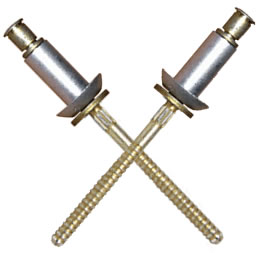
Blind rivets have revolutionized the way in which parts are fastened. Unlike traditional rivets, they don’t require access to both sides of the parts. They are known as “blind” rivets because they only require access to the front of the parts. What are the benefits of blind rivets exactly, and why should you choose them over traditional rivets and fasteners?
#1) Faster Installation
You can install blind rivets more quickly than traditional rivets. As previously mentioned, they only require access to the front of the parts with which they are used. Traditional rivets typically require access to both the front and back. In some applications, however, you may not be able to easily access both sides. Fortunately, blind rivets offer a solution.
#2) Uses a Simple Tool
They may sound complex, but blind rivets use a simple tool to fasten parts. Once you’ve drilled a hole through the parts, you can insert the blind rivet. You can then use a riveting tool to draw the mandrel through the rivet itself. The blind rivet will expand, thus holding the parts together. Regardless, as long as you have access to a riveting tool, you can install blind rivets.
#3) Resistant to Vibrations
Blind rivets are highly resistant to vibrations. This is one of the reasons why they are commonly used in aerospace manufacturing. Airplanes are susceptible to vibrations. Over time, vibrations can cause bolts and screws to loosen. Blind rivets, though, are permanent fasteners that can withstand vibrations and other external forces.
#4) Resistant to Tampering
Blind rivets are also resistant to tampering. There’s no easy way to remove a blind rivet after installation. When you use the riveting tool, you’ll compress the blind rivet while subsequently causing it to expand and collapse around the parts. Not only will this protect the blind rivet from vibrations, but this installation process will protect it from tampering as well.
#5) Variety of Head Styles
By definition, a blind rivet is any rivet that only requires access to the front of the parts and not the back or “blind” side of the parts. But there are still many different types of blind rivets. Some of them have a dome head, for instance, whereas others have a flanged or countersunk head. Dome-head blind rivets are among the most common. They feature a traditional round head. Flanged-head blind rivets, in comparison, have a flange or protruding rim. Finally, countersunk-head blind rivets are designed to sink into the parts with which they are used.



